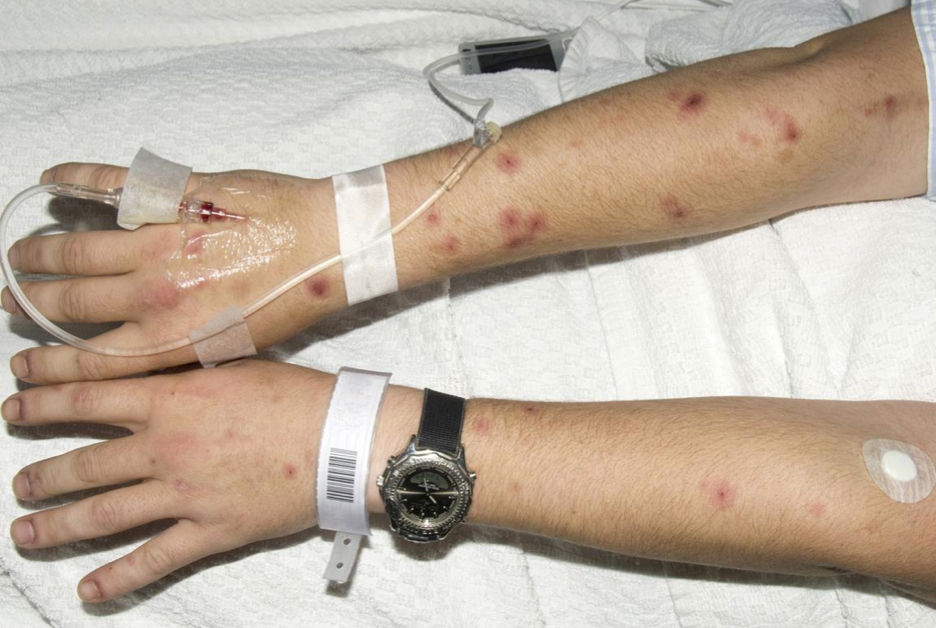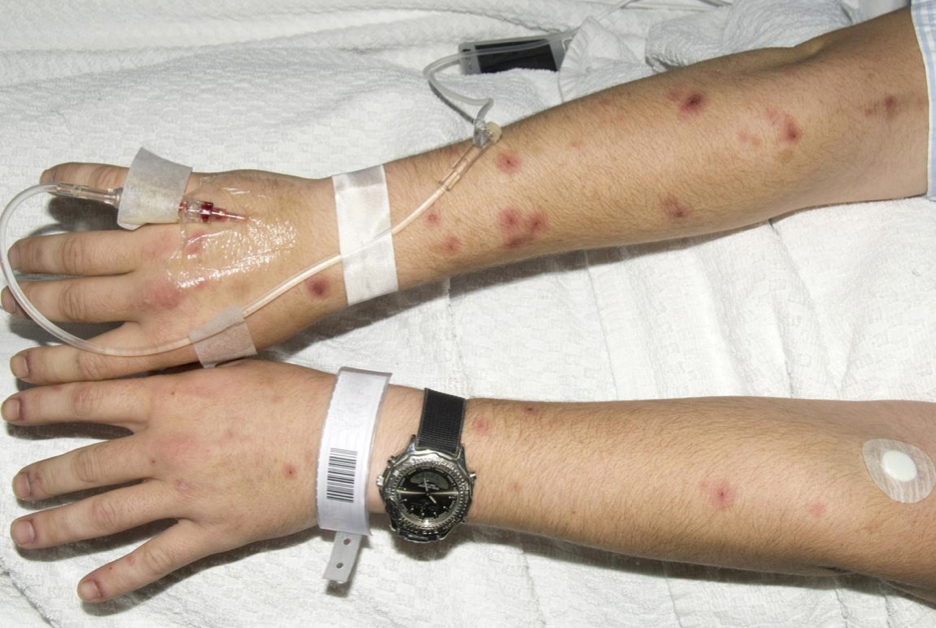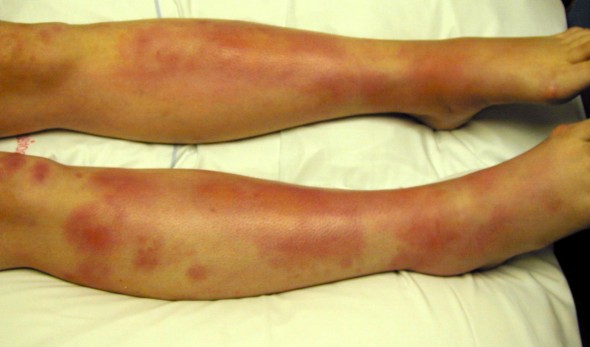OK, we gave you two descriptions of rashes to have a look at:
1. A 25 year old man presents to the emergency department with a three day history of spreading rash and painful oral lesions.
2. This 24 year old female presented to the emergency department complaining of painful lumps and redness confined to her lower legs which had developed over the last two weeks.
We know you think we come up with the same thing every week - listen to what the examiners are telling you!
1. A 25 year old man presents to the emergency department with a three day history of spreading rash and painful oral lesions.
2. This 24 year old female presented to the emergency department complaining of painful lumps and redness confined to her lower legs which had developed over the last two weeks.
We know you think we come up with the same thing every week - listen to what the examiners are telling you!
Rash 1 looks like this: it's ERYTHEMA MULTIFORME. The key clue is the history of systemic rash with oral involvement. Once you've twigged to this a sensible description of the rash, and a differential should be quite easy.
This wasn't an amazingly well done question...The official college report notes:
The overall pass rate for this question was 58/81 (71.6%)
Pass Criteria:
The overall pass rate for this question was 58/81 (71.6%)
Pass Criteria:
- Description: Painful oral mucosal lesions characterised by haemorrhagic blistering and ulceration. Symmetrical xtensor target lesions of arms with some facial involvement.
- Diagnosis: Erythema Multiforme Major on basis of skin plus mucosal lesions affecting at least one site, Stevens Johnson Syndrome less likely– more widespread, multiple mucosal involvement expected
- Aetiology: Idiopathic (50%), infections (herpes, mycoplasma), drugs (antibiotics, anticonvulsants, NSAIDS), malignancy, immunological diseases
- Differential Diagnoses: Toxic Epidermal Necrolysis – extensive skin loss and abnormal vitals. Other conditions – disseminated herpes infection, pemphigus, drug reactions
- Failure to mention “target’ lesions on upper limbs or to note the combination of skin and mucosal lesions
- Failure to recognise diagnosis as EM major or Stevens Johnson Syndrome
- Failure to mention infections and drugs as possible causes
Rash 2 looks like this: it's ERYTHEMA NODOSUM. The clue is the nodular rash confined to the lower limbs. Again, you should be able to write a reasonable description and diagnosis based on the clinical information alone.
What should you have gotten out? This is what the examiners had to say:
The overall pass rate for this question was 51 / 64 (79.7%).
The photograph shown of the lower legs is typical of erythema nodosum.
The examiners felt this question tested general dermatological knowledge as the stem and picture left little doubt about the diagnosis.
Nevertheless the description should have included important negatives and normal features.
More testing was the list of aetiological factors, which need to be categorized and prioritized.
Failing answers gave limited description and interpretation and were only able to offer a very limited list of etiological factors.
Now, that's all a bit generic (it's from an earlier exam when the reports were less comprehensive) but you still get the idea.
The overall pass rate for this question was 51 / 64 (79.7%).
The photograph shown of the lower legs is typical of erythema nodosum.
The examiners felt this question tested general dermatological knowledge as the stem and picture left little doubt about the diagnosis.
Nevertheless the description should have included important negatives and normal features.
More testing was the list of aetiological factors, which need to be categorized and prioritized.
Failing answers gave limited description and interpretation and were only able to offer a very limited list of etiological factors.
Now, that's all a bit generic (it's from an earlier exam when the reports were less comprehensive) but you still get the idea.
Make sure you have been through the differentials and general causes for both erythema nodosum and erythema multiforme. Lists to the VSG please!


